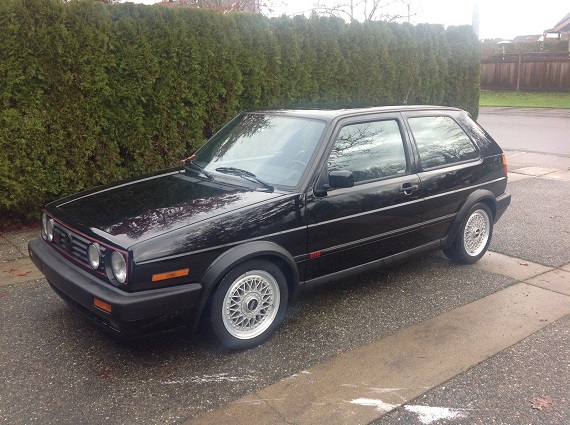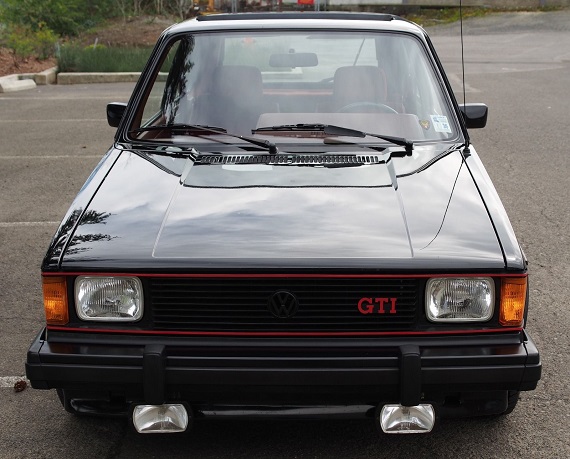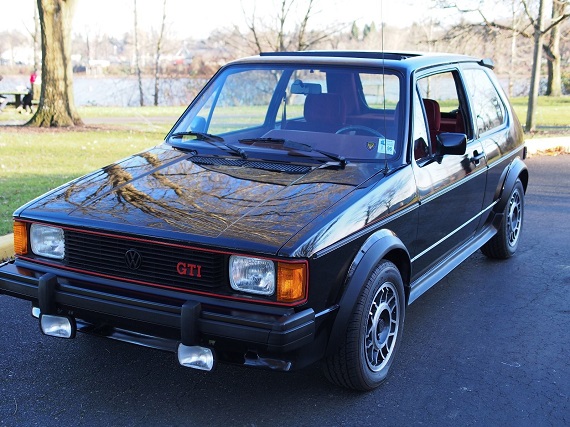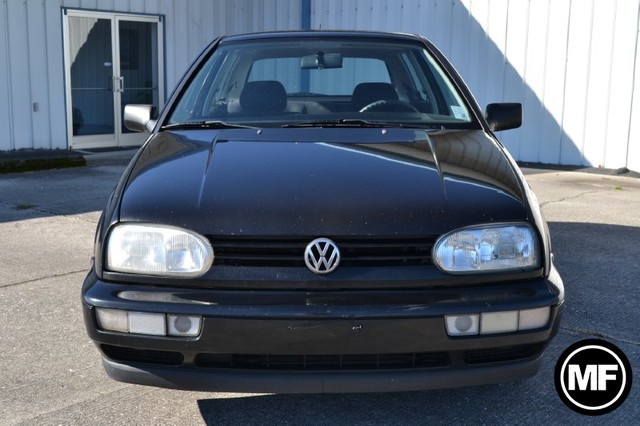When I was young, my family traveled out to Michigan. The year was 1984, and on the trip we went to see some vintage car racing as my father is a pretty big Shelby nut. There were plenty of Cobras and GT350s ripping up the track with V8s bellowing away that day, but what stuck in my mind more was a demonstration that was put on by Volkswagen of America. There were 5 or 6 then-new GTis that were put through their paces, and the particular corner we were sitting at had the train of these hot hatches popping over curbs, dangling a wheel in the air as they slithered through the corners. Sounding more like a pack of angry hornets, they made more of an impression on me than the rumbling Ferrari-killers, and to this day I still smile and think of that day every time I see a GTi. More than once in my ownership of a 1984 example, I even tried to imagine the train of GTis racing around that course on my daily commute to school to the chagrin of all of the other drivers on the road. But the best way to contemplate that magical day in my memory is to check out a race-ready Rabbit:
Tag: Hot hatch
While it’s nice to look at imports from Europe that we didn’t get here, when it comes to the Volkswagen front we got at least one of the most desirable 1990s VWs that wasn’t sold in Europe – perhaps, one of the most desirable all around Volkswagens ever made – in the 1990-1992 GTi 2.0 16V. It wasn’t really the best at much of anything compared to the competition; the engine was thirsty and noisy, the upright shape of the Mk.2 Golf was old and on the verge of being replaced, the expensive wheels bent at the mere sight of a pothole, the transmission self-machined occasionally and the electronics were the work of a high school tech class. If you wanted a fast, economical, awesome handling hatch that actually worked all of the time, you bought an Acura Integra GS-R. But all of these faults didn’t detract from what was for the the most desirable GTi package Volkswagen produced. You got the iconic chunky shape of the Golf with extra wide flares. It sat lower, and though they were soft those BBS RMs were gorgeous. Inside were the spectacular Recaro Trophy seats and little else – these were no-frills cars compared to the more luxurious GLi models. And to top it off, under the hood was the screaming 16V in 2.0 form. Good for 134 horsepower and vibrating the entire car (and your eardrums) at highway speed, this car moved beyond look and into entire sensation:
CLICK FOR DETAILS: 1990 Volkswagen GTi 16V on eBay
1 CommentWe’ve witnessed some pretty crazy market increases over the past few years. While generally it’s been the big names from Porsche and BMW stealing headlines, the reality is that the entire 1980s market is on the rise. Hagerty, for example, recently emailed me to tell me that the 1984 Pontiac Fiero has increased in value nearly 100% in the past year. As I had nightmares about that, I thought about the many other cars that used to be bought for chips that are now heading into unaffordable territory. Two years ago, we saw the Mk.1 GTi join that list when in a few weeks we witnessed back to back record sales. First to hit the market was the nearly $18,000 1983 Callaway Turbo example with 18,000 miles,followed closely by a 1984 with some period modifications and 20,000 miles for $16,000 in December, 2013. Those were enough to assume that the market was heading strongly up. Yet we also saw it flounder slightly, as very nice and original examples struggled to break – or even come close to – $10,000 again. Well, it would seem that things are back on track, because another low mile Callaway Turbo with period Zender kit has arrived on the scene, and it’s currently poised to blow the market apart once again:
CLICK FOR DETAILS: 1984 Volkswagen GTi Callaway Turbo on eBay
Comments closedI still very much remember the launch of the A3 chassis Volkswagens and being less than impressed at the time. At least in my mind, the second generation GTi with the 2.0 16V was a hard act to follow and the 3rd generation – unless equipped with the sonorous VR6 – seemed downright soft in comparison. They looked a bit chubby, they were equipped with only 14″ wheels when everyone else was sporting 16″ wheels, and the base GTi was equipped with a lowly 2.0 8 valve inline-4. It seemed like Volkswagen was badge engineering a standard Golf just to make money, and in many ways you could argue that’s exactly what had occured. It wouldn’t be until 2007 that I would finally understand the A3 package a bit more. My dismissal of the entire “2.slow” lineup turned out to be very misplaced, as my foray into A3 ownership proved. I picked up a very second-hand but relatively low mile K2 edition 1998 Golf. Effectively, this was a 4-door GTi, with fog lights, air conditioning, heated sport seats and white-faced gauges. Was it a really special car? No. But for basic transportation, it was fantastic fun to drive, easy to maintain, got in excess of 30 m.p.g. no matter what you did with the throttle pedal and started every time I stuck the key in the ignition. Granted, it had typical Mk.3 problems with some electric gremlins and rust had started creeping through. But there isn’t a moment that I regret any part of my Mk.3 ownership other than that for so long I overlooked the 2.0 as a form of entertaining car ownership:
CLICK FOR DETAILS: 1996 Volkswagen GTi on eBay
1 CommentIt’s a bit sad that there is such a huge generation gap when it comes to the letter “i”. Teaching college level students, were I to write the lower case letter “i” up on the board and ask the meaning, immediate answers of “iPhone”, “iPod” or “iPad” would pop up. Perhaps some of the more clever individuals would associate it with “intelligent”. Apple has transformed the meaning of the lower case letter “i” for entire generations of people who will grow up not knowing what it means to my generation. For example, were I to write the word “carburetor” on the board and ask the meaning, outside of some motorcycle enthusiasts and perhaps a few into older cars, I’m willing to bet very few would know what the word meant, likely associating it with carbonated beverages before internal combustion engines. But in the 1970s and 1980s, “i” was a magical letter which indicated greater performance and improved reliability. It ranged from exotics like the Ferrari 512BBi right through the 2002tii, and while some of the systems were less dependable than others, by the time we got to Bosch’s continuous injection system, German cars were universally the best running, most dependable cars you could get into. In fact, one could argue that most of the success of the German car industry boils down to not their legendary build quality nor the advanced designs they pioneered, but the dependability of the fuel injection system. “i” meant a higher level of performance, and instead of simply being a necessity for every teen to mindlessly separate from society it was a way to indicate you had arrived, and you had arrived in style thanks to your fuel injected cars. Audis sported “Fuel Injected” badges proudly up through 1985; Mercedes-Benz attached an “e” for Einspritzung to nearly every model, while virtually every BMW sported an “i” badge for several generations, and some still do. But enthusiasts of the Volkswagen front point to one very special “i” which followed the Grand Turismo letters on the Mk.1 Golf chassis as the most classic hot hatch the market has ever seen:









